Miscanthus Chinese: description and varieties, planting and care
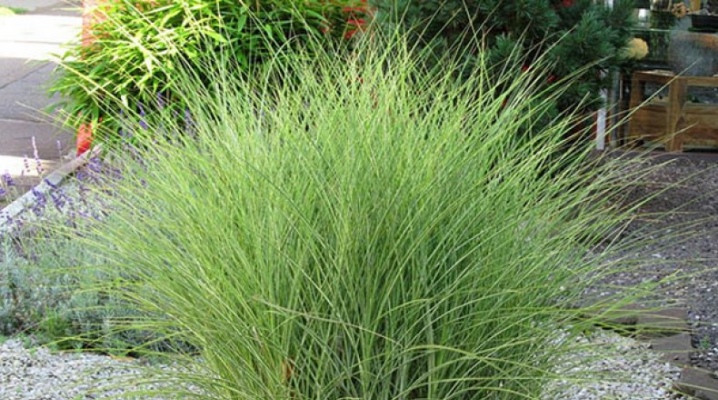
Miscanthus, also known as the fan, is rightfully considered a majestic cereal. Strong stems with luxurious panicles, framed by equally beautiful foliage, attract attention. Due to its decorative effect, it has become very popular and beloved by many gardeners.
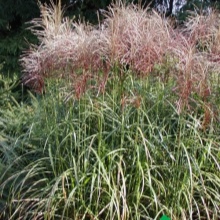

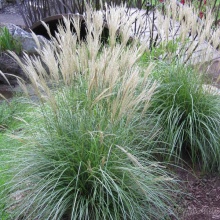
Peculiarities
Chinese miscanthus - decorative perennial of the Cereal family. Basic botanical description: A herbaceous shrub with erect stems, on the tops of which there are fluffy panicles in the form of a fan. The roots are powerful, deepen to 5–6 m and grow rapidly. The total height of the plant varies from 80 cm to 2 m, some specimens can grow above 3 m. The leaves are long, linear, hard and rough to the touch, 1–1.5 cm wide.
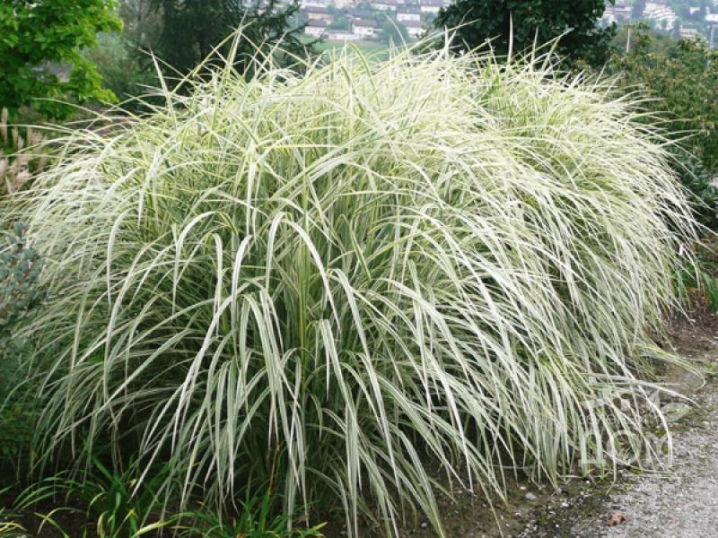
With the beginning of the growing season, shoots and leaves quickly grow, so that by summer the plant takes on the appearance of an overgrown bright green bush.
With the arrival of autumn, the shade of the foliage changes, in some varieties it becomes yellow-pink, in others it is rich orange, and in some it is brown-burgundy. Any autumn color looks very impressive without reducing the decorative effect of the plant.
In July, paniculate inflorescences appear with a length of 10 to 30 cm. They are long spikelets of pastel shades. Depending on the variety, their color can be from white to bright red. Lush and soft fans last until mid-autumn and are eye-catching.
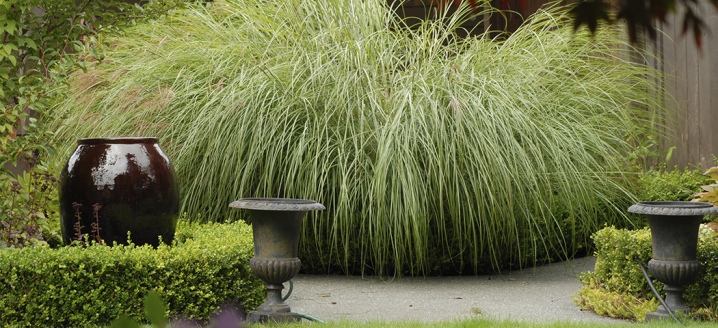
Varieties
A wide variety of varieties are known. Many of them take root very well in the Moscow region and the middle latitudes of Russia.
- Adagio. A low, graceful variety. Height of stems 1.2–1.4 m. Leaves are thin, 70–80 cm long, silvery-green. Blooms in August-September. The inflorescences are pink, by the end of the flowering period they acquire a creamy white hue. Needs well-moistened soil.
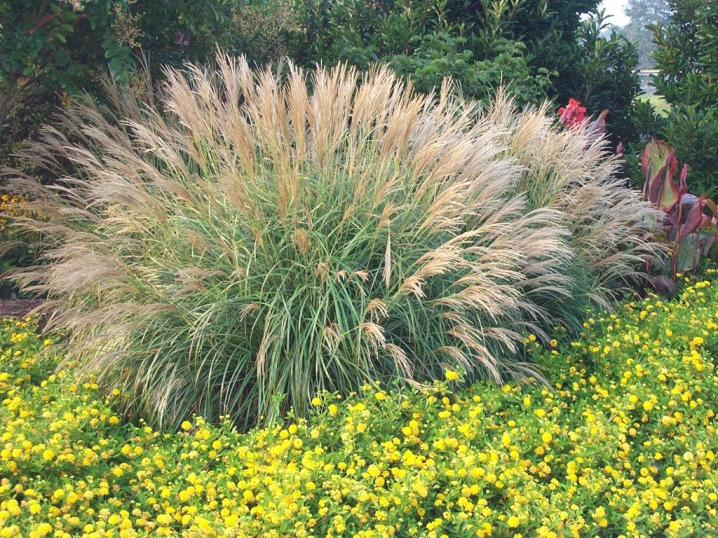
- Gracillimus (Gracilimus). Fast growing tall and early flowering variety. Stems reach 2 m. The bush has a spherical shape. Leaves are green, narrow, about 1.5 m long, weeping-looking, with a white stripe in the middle. Panicles are composed of small spikelets of a purplish-silvery hue. Bloom profusely in July and August.
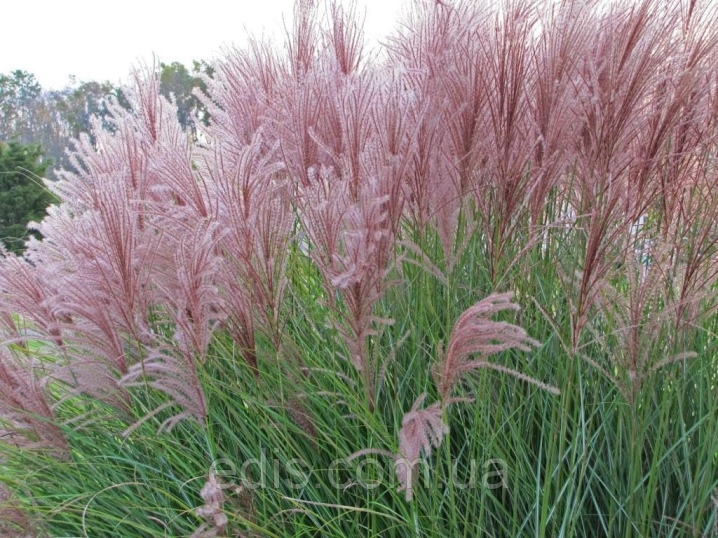
- Zebrinus (Zebrinus, Zebrina). Light-loving tall miscanthus. The stems grow up to 3 m, the length of the leaves is more than 2 m. Golden stripes are present on the rich green leaves. Blooms in August. Paniculate inflorescences consist of many spikelets and have a silvery-lilac color. The variety is distinguished by its hardiness, calmly tolerates winter at low temperatures.
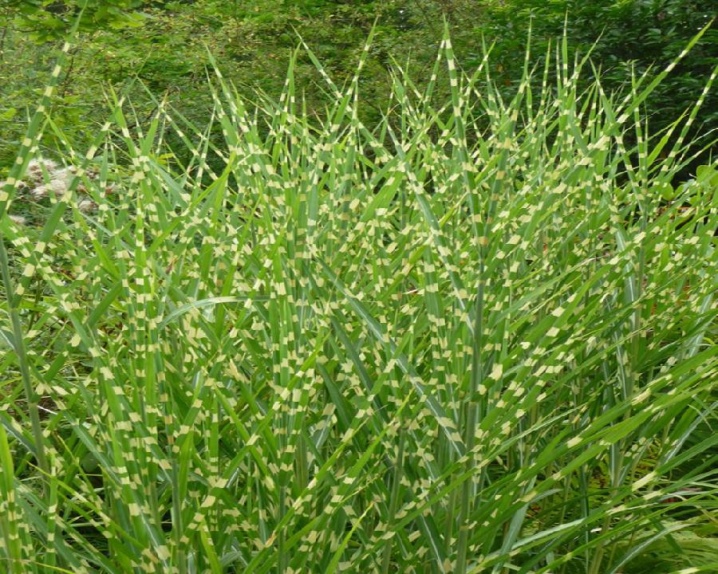
- Krater. Compact globular variety. Looks spectacular anywhere in the garden. Height does not exceed 1.2 m. Leaves are curved, green with a silvery sheen. At the end of summer, bright red-brown inflorescences bloom, by the end of autumn their color becomes paler.
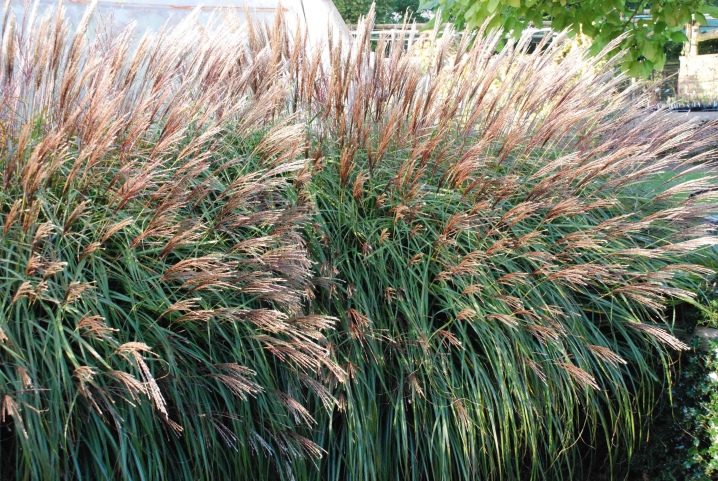
- Little Zebra (Little zebra). A low, spreading bush, grows from 1 to 1.2 m. A distinctive feature is the presence of small yellow spots on green leaves. Drawing an analogy with short stature and zebra stripes, breeders gave the appropriate name to the variety. Blooms in September, panicles are pale purple in color.
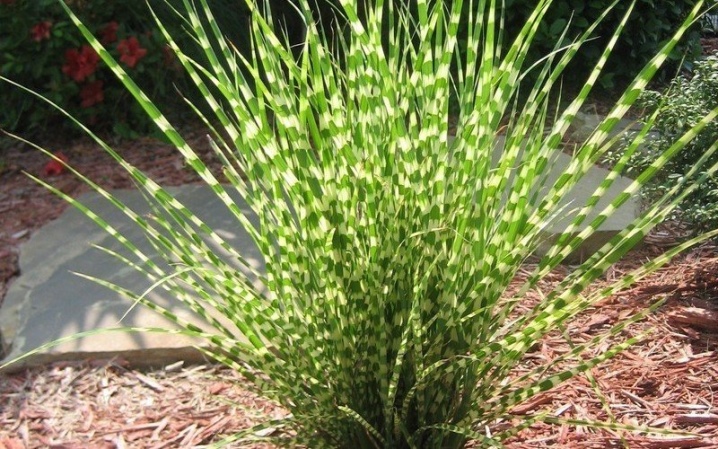
- Morning Light (Moning Light). Tall miscanthus, particularly picky about sunlight. Numerous stems reach a height of up to 2 m. The leaves are narrow, about 1 m long, with characteristic white stripes along the edges.Blooms in reddish clusters in late September - early October.

- Purpurascens (Purpurescens). A charming, decorative medium-sized shrub. Plant height 1–1.6 m. The foliage is gray-green, and with the onset of autumn it acquires bright orange-red hues. The paniculate inflorescences are narrow, at the beginning of flowering (in September) they have a purple color, gradually turn pale and become white by the end of October.
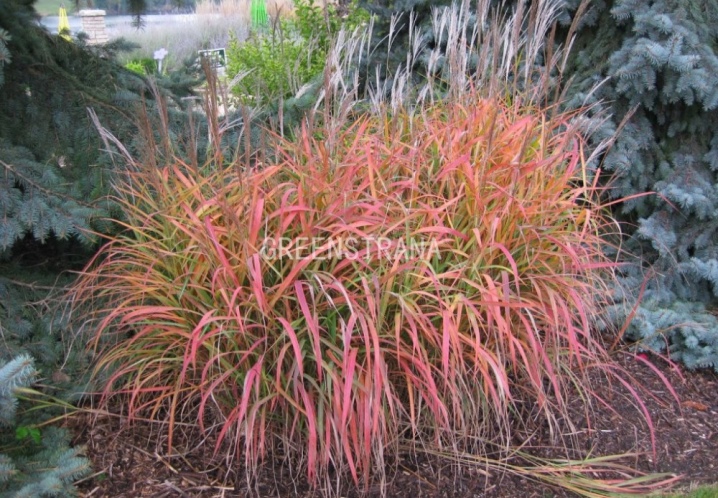
- Strictus (Strictus). Not picky about the soil, can grow in dry and humid places. With a lack of moisture, the growth of stems does not exceed 2 m, in waterlogged areas it reaches larger sizes: up to 3 m in height and grows more strongly in diameter. There are white blotches on the leaves. Inflorescences open in September and have a reddish tint.
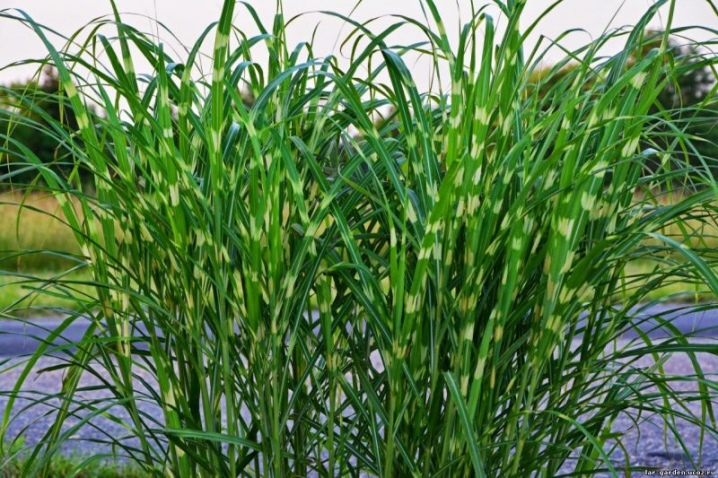
- Ferner Osten (Ferner Osten). Low-growing neat miscanthus. The diameter of the bush is 0.5–0.7 m, in growth it is gaining about 1.3 m. Panicles of a bright red hue bloom at the end of August, as they bloom, their color gradually changes: after about a month it becomes pink, by the end of flowering - white that looks luxurious against the background of autumn orange-red foliage.
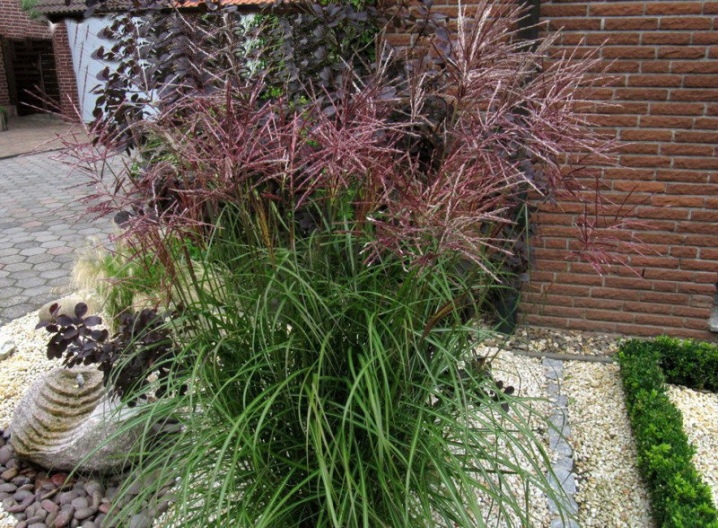
- Flamingo (Flamingo). The bush grows up to 2 m in height. Received the name for the majestic large tender pink-orange inflorescences, similar in color to the bird of the same name. Leaves are solid green. Blooms in late summer.
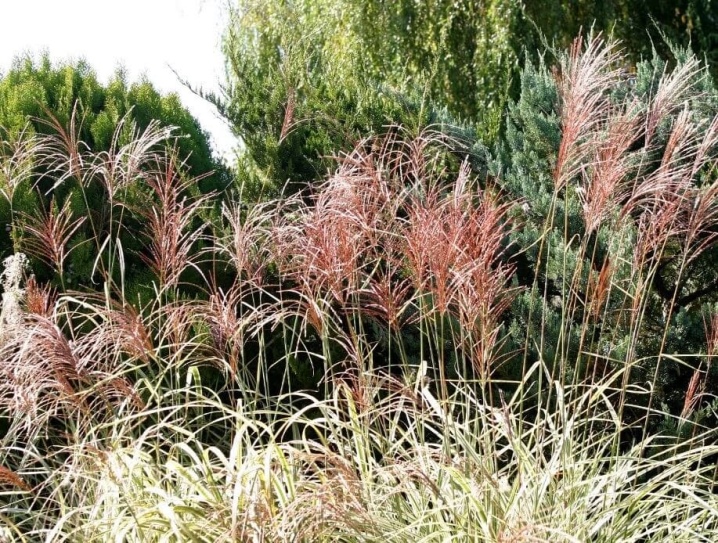
Landing
Planting a plant is not difficult. Observance of elementary rules guarantees rapid rooting and development of ornamental cereals.
Optimal timing
An important condition for planting a plant - well warmed up soil. It all depends on the region. In the south, you can start planting at the end of March, in central Russia - at the end of April or mid-May.
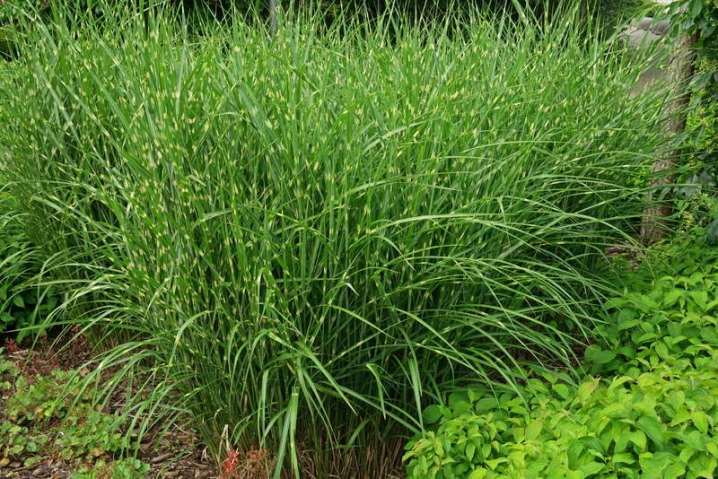
Seat selection
For good growth and development, miscanthus needs to choose a sunny and well-protected place from drafts. The plant loves moisture, therefore, if there is a pond on the site, it is better to plant a bush near it or provide good watering. Many varieties grow well in dry places, but their sizes may slightly differ from the declared varietal characteristics downward.
All varieties of Chinese miscanthus prefer fresh soil. They can grow well on different types of soils, except for heavy clay and sandy.
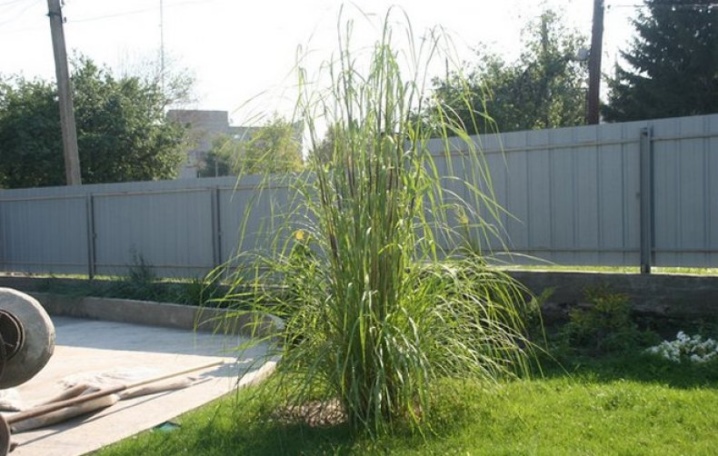
Instructions
Only adult seedlings should be purchased for planting in open ground. The plant has a long growing period, and a young seedling will not have enough time to acclimatize before the onset of cold weather. An adult specimen will be able to normally adapt to a new place and calmly endure wintering. Before buying, you should take a good look at the bush. The roots and stems should be free of damage and signs of disease. Landing rules:
- the place for miscanthus must be prepared in advance, well dug up and weeds removed;
- immediately before planting, it is necessary to moisten the seedlings with warm water;
- prepare planting holes 20–30 cm deep, the distance between them (when planting several specimens) should be about 1 m;
- to control the growth of the bush, you can shield the holes on the sides with slate or small boards;
- put compost on the bottom of the pits and mix with the ground;
- place the seedlings in the holes, fill the space with soil and lightly tamp;
- pour under the root.
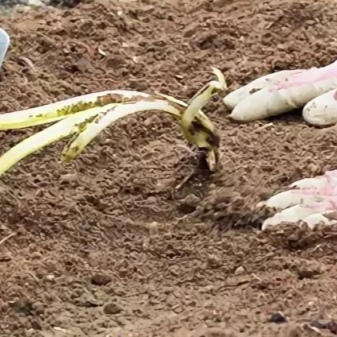
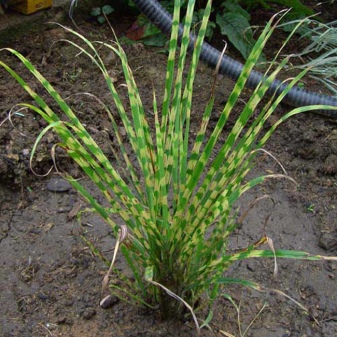
How to take care of it properly?
The most important thing in caring for a plant is timely watering, which is especially important in a hot and dry season. Miscanthus needs a lot of water, so it is permissible to water it at the root with a hose. To maintain decorativeness from the second year, miscanthus should be systematically fed with nitrogen-containing and phosphorus-potassium fertilizers.
The perennial is thermophilic, and therefore it is better to cover it for the winter in order to protect the roots from hypothermia. With the onset of cold weather, the soil should be covered with a layer of mulch.Fallen leaves, grass cuttings, straw or sawdust are suitable for this. The plant can be covered with a covering material so that air can pass through it.

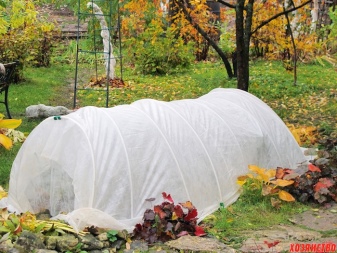
Reproduction methods
The most optimal way to reproduce is by dividing the bush. It should be divided in the spring before the beginning of the growing season. In the southern regions, it is possible to carry out the procedure at the beginning of autumn. For better rooting, the cuttings should be large or medium in size.
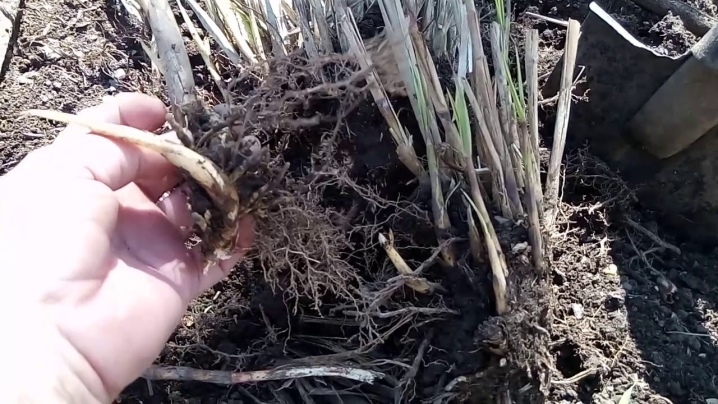
Another way to reproduce is seminal. Sowing seeds is best done immediately in individual containers with fertile soil in March, and with the onset of stable warm spring days, plant seedlings in a permanent place. In warm climates, seeds can be sown outdoors in late autumn.
When choosing this method, it should be remembered that the plant will develop more slowly, and decorativeness will appear only 4 years after sowing.
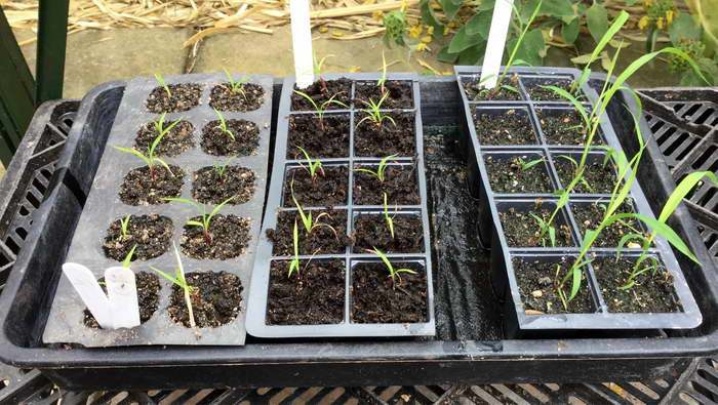
Diseases and pests
Miscanthus Chinese is resistant to disease and is not susceptible to pests. One has only to be afraid of the appearance of root rot... To prevent it, perennials should be planted on fresh, rested soil, in no case on places where potatoes or tomatoes were previously grown.
Insects practically do not pose a threat to the plant. In rare cases, they may try to feast on spider mite. You can recognize its appearance by the formation of a thin web. In this case, it is necessary to immediately treat the bushes with a mild soapy solution or a special agent. "Bartimek".
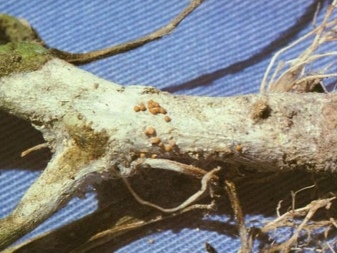
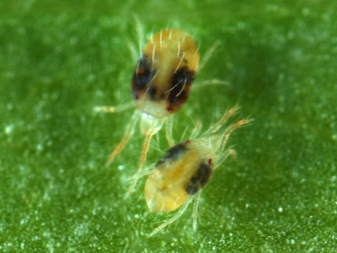
Use in landscape design
Miscanthus is an unpretentious plant that will add charm to the garden and will delight you throughout the summer season. Chinese miscanthus varieties look great in both group and single plantings.

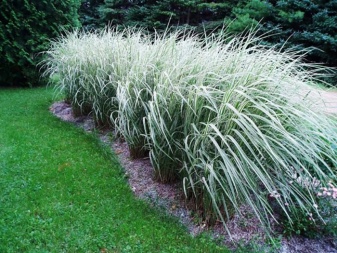
The bushes will be an excellent decoration for rockeries, as they are in perfect harmony with most plants. Against their background, bright flower arrangements of roses, peonies, asters and chrysanthemums look amazing.
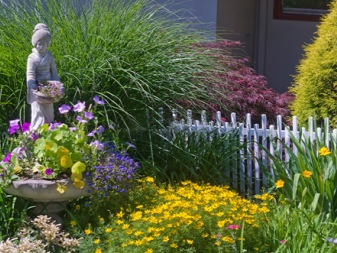
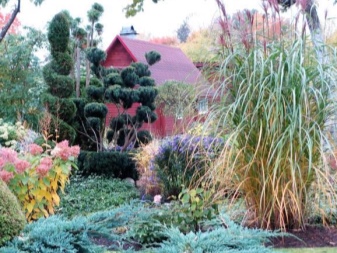
It goes well with coniferous plantations and creeping herbaceous species. The plant can be used for natural zoning of garden areas. But perennial bushes look especially luxurious near reservoirs.
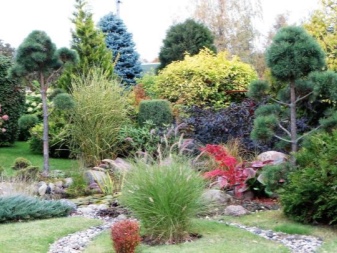

For an overview of Chinese miscanthus, see the video.







































































































The comment was sent successfully.